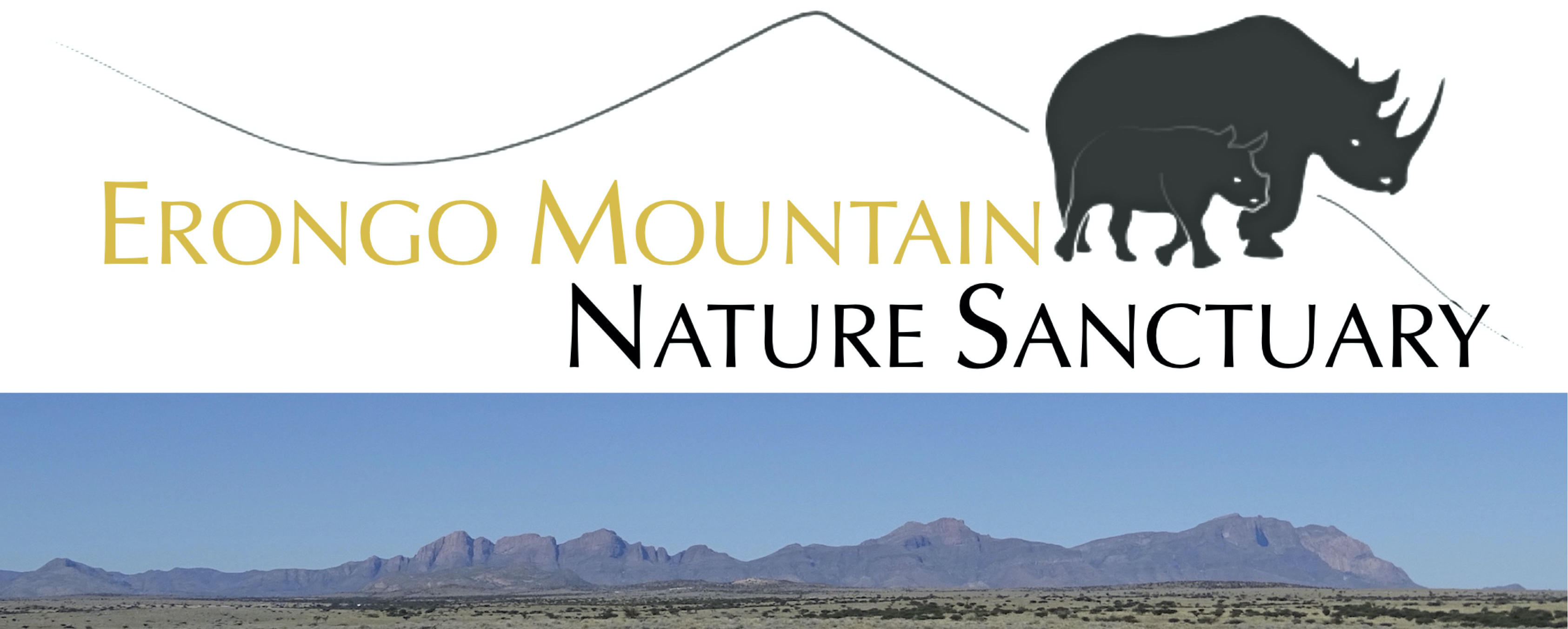Although the plant kingdom is often forgotten when one thinks about conservation, the Erongo Mountain Nature Sanctuary and its supporters commit to the protection of the indigenous plant species - especially those indigenous to the Erongo.
The Erongo Mountains have a - due its unique biotope - unique plant life; also species endemic to Namibia occur here.
Although most of the vegetation is decidual in the winter time, the picture is wholly different in the summer when the rainy season begins. At this time of the year everything turns green and even a few “wild flowers” are a welcome visual variation. This, however, is only present for a few months, until everything returns to the region’s characteristic brown and grey tones. Merely along the dry riverbeds the green often persists throughout the year.
Rare spectacle in a biotope which is otherwise considered a semi-desert![]()

![]()

![]()
As the west of the Erongo Mountains already belongs to the semi-desert, many of the typical iconic plant species of western and north-western Namibia occur here. In these granite areas Moringa, Kobas, Sterculia and various Commiphera (Corkwood) occur frequently. Euphorbia - the cactus of Africa - and very locally also Lithops can be found.
Many Acacia species are widespread in the Erongo. While the landscape is predominantly covered in sparse shrubs and bushes, the picture is a different one along the larger dry rivers. Owing to the better ground water level, big trees at times grow here. Whereas at the foot of the granite a Fig tree can be found here and there, especially Lead-wood and Ana as well as Umbrella-thorn trees grow on the fringes of the dry rivers meandering through the landscape. Especially the pods of the Ana trees attract a lot of game.
Conservation projects in the plant world that the Erongo Mountain Nature Sanctuary works in, are especially the extermination of Prosopis (P. glandulosa) in the entire Trust area. Prosopis are not indigenous to Namibia, they were introduced from central America. Originally they were probably introduced as a shade-giving tree, as Prosopis often carry leaves throughout the year. The pods are also extremely nutritious and were fed to livestock. Nonetheless, the Prosopis is a very aggressive plant that displaces indigenous flora relentlessly. This is especially true at the dry riverbeds, but the Prosopis is also prevalent at homesteads and villages. Although the situation is comparatively good in the Erongo Mountains, there are efforts to combat the spreading of Prosopis.
Due to overgrazing by livestock - and adding to that the good rainfalls of the past 10 years - many clearings in the bushland have fallen victim to bush encroachment. Often these openings very quickly get overgrown with Red-thorn (Acacia reficiens). As such large clearings are very important habitat for Springbok for example, debushing is also done in the Erongo. This is a very time-consuming endeavour, especially if the vegetation is not to be removed indiscriminately.


